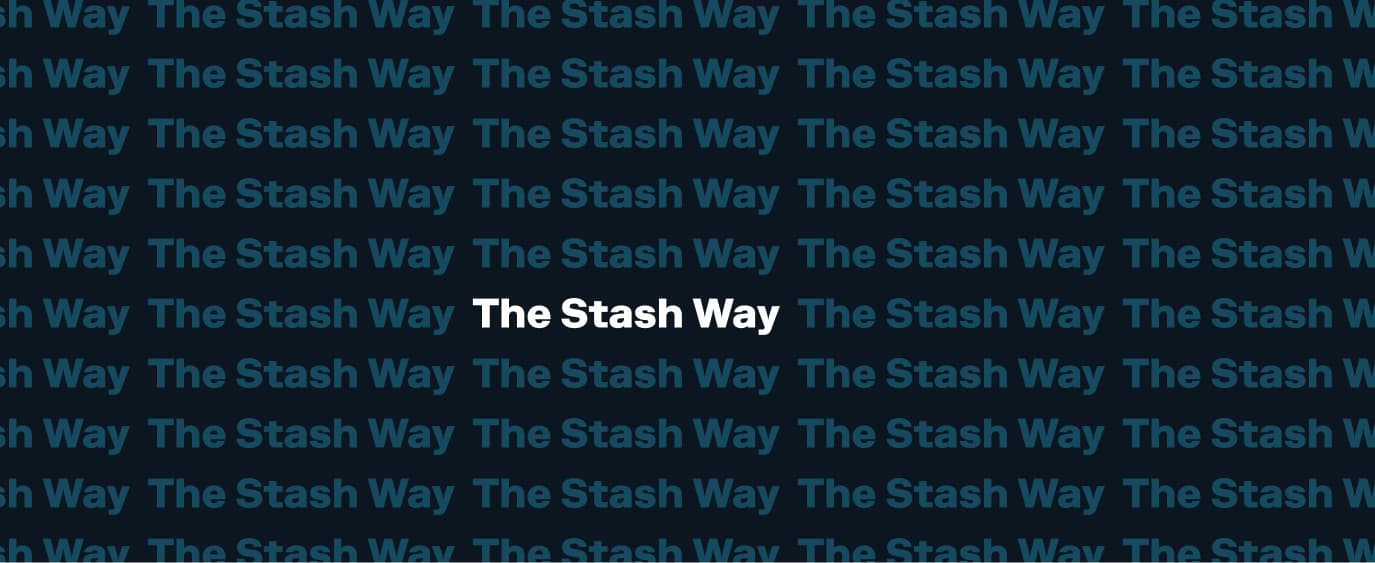Jan 02, 2024
The Stash Way: Our Investing Philosophy
Consider investing regularly, create a diversified portfolio, and invest for the long term.

We know investing can seem confusing, and it can be intimidating, even scary, to figure out the smartest way to put your money in the market or to even get started buying your first stock, bond, or fund.
That’s why we’ve boiled down our investing philosophy into three basic steps that we call the Stash Way:
Invest regularly
Diversify
Invest for the long-term
We’ll explain more about each one. But here’s a short explanation.
Invest regularly
After you’ve set aside savings for your rainy day and emergency funds, consider investing in the market, and making regular investments a part of your savings plan. Even if you take small amounts and invest them every week or every month, that can add up through the power of something called compounding.
Compounding is when the interest on the assets you own also earns interest, which can magnify your savings and your wealth.
Regular investing like this also has a name. It’s called dollar-cost averaging. But you don’t have to concern yourself with the name so much. We’ll give you an example of how it can help you have a better investing experience if you invest regularly.
Let’s assume you put $20 each week into the market in a conservative fund that tracks a broad market index, such as the S&P 500.
In some weeks, the market will be up, and the share price for the fund will also go up. During other weeks, the market will go down, and so the share price of the fund will also go down. On the up weeks, you’ll be paying more for the fund, and on the down weeks, you’ll be paying less.
Over time, the highs and lows should result in a better purchasing experience for investors.
Regular investment with Auto-Stash
One way to Stash can help you invest regularly is through Auto-Stash. It’s an easy-to-use tool available on the app that can help you save or invest small amounts of money consistently over time, regardless of market conditions. You won’t have to worry about trying to pick the right time to invest or “timing the market” which we don’t recommend.
Auto-Stash boasts a few key features that can help you supercharge your saving and investing, including Set Schedule, which allows you to set up automatic transfers.
You select the amount you want to set aside, when and how often you want to set it aside, and whether you’d like Stash to automatically invest it in your ETFs and stocks, or simply place the money in your cash account. It’s an easy way to save and invest regularly, on a schedule that works for you.
Diversify
You’ve heard the term, don’t put all of your eggs in one basket. If you drop the basket, you’ll break all the eggs.
Diversification means you’re not putting all of your eggs in one basket, so you can better weather the stock market’s ups and downs. That means you won’t put all of your money in too few stocks, bonds, or funds.
When you’ve diversified your portfolio, it will hold a variety of investments that are not all subject to the same market risks, including stocks, bonds, and cash, as well as mutual funds and exchange-traded funds (ETFs).
By diversifying, you’ll be choosing investments in numerous economic sectors—not just the hot industry of the moment—as well as in different geographies around the globe.
More about diversification
Here’s an example of what that means. If you buy only technology stocks or stocks in the energy industry, you’d be putting all of your eggs in one basket. If tech stocks experience trouble, or the energy industry suddenly must deal with a natural disaster, it’s likely the stocks in those industries will decline together, and you’d lose more money than if you were diversified.
A diversified portfolio might have stocks in technology and defense, but they also might include consumer staples, energy stocks, and possibly commodities, such as metals, to name just a few possibilities. It’s also likely to include bonds and some cash.
One way to start diversifying is by purchasing an exchange-traded fund, or ETF. ETFs are investment funds that are traded on an exchange, such as the New York Stock Exchange (NYSE) or NASDAQ. They invest in numerous companies at once.
ETFs often correspond to a particular size company, industrial sector, market, or even social goal. So, you could own shares in an ETF that owns blue-chip stocks of large companies, or the stocks of less well-known, smaller companies.
You could also purchase shares of ETFs that specialize in emerging markets, commodities, or consumer products, to name a few different options. An ETF might also invest in companies that are helping the environment or working to increase the number of women in leadership positions at large companies.
Think long term
We know that markets are always changing, they can go up one day and down the next, and that volatility can be scary. But we also know that if you follow Stash Way’s investing philosophy, it can smooth out some of the bumps and help you to grow savings and wealth.
Investing in the stock market always carries risk. There is no guarantee that what you’ve invested in will make money. But we think if you follow the three basic principles of the Stash Way, you can minimize risk and set yourself on a path to realizing your financial goals.
Over the past two decades, there have been turbulent periods in the stock market. The chart below reflects how the S&P 500, a key index that measures the broader market, has fluctuated over that time. You’ll see gains and declines through the dot-com bust, 9/11, the Great Recession, wars in Iraq and Afghanistan, and four separate presidential administrations. You’ll see how staying the course can help you achieve your financial goals. Over time, markets have trended upward.
Stash on
With Stash, you can easily invest in dozens of funds and individual stocks.
You can also start investing with small amounts, even $5 a month can add up. For those who are looking to invest in the market but worry they don’t have enough to begin, Stash lets you purchase fractional shares, which is a great way to get started.
Fractional shares allow you to invest in exciting, innovative, and interesting companies without having to pay full share price. Think of them in terms of a pizza. If the whole pie is a share, then a fractional share is a slice. Except this pizza may earn interest, dividends, and grow over time. And you get a taste of the company’s success.
Stash can help you meet your long-term financial goals with a variety of products, including Stock-Back, which rewards you with fractional shares of stock every time you spend with your debit card1, and portfolio diversification analysis, designed to help you create a diversified portfolio, so your investments don’t grow out of sync with your goals.
Stash is on a financial journey with you, and that includes helping you make smart decisions about investing.

Investing made easy.
Start today with any dollar amount.
Related articles

investing
Dec 11, 2025
How to Invest through the Holidays—Without the Stress

investing
Oct 23, 2025
Why Millions Are Canceling Disney+ and Hulu and What It Means for Investors

investing
Aug 15, 2025
Money Insights

investing
Jul 07, 2025
How to start investing: a guide for beginners

investing
Jun 04, 2025
Growth Stocks to Invest in for 2025

investing
Jun 03, 2025
Sustainable Investing Stocks to go after in 2025
By using this website you agree to our Terms of Use and Privacy Policy. To begin investing on Stash, you must be approved from an account verification perspective and open a brokerage account.
